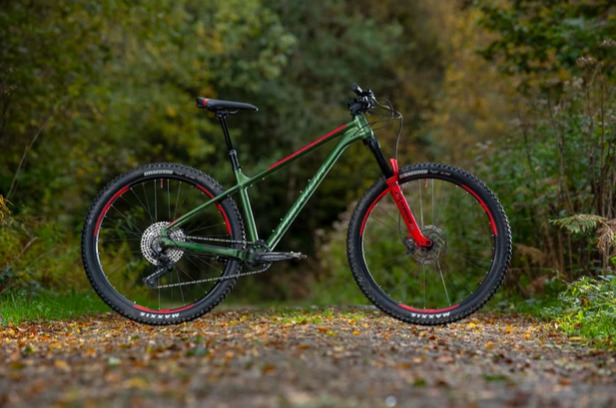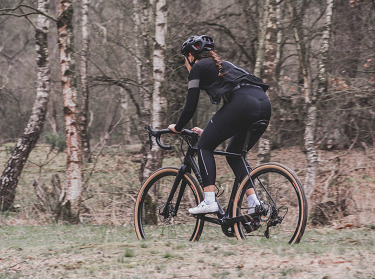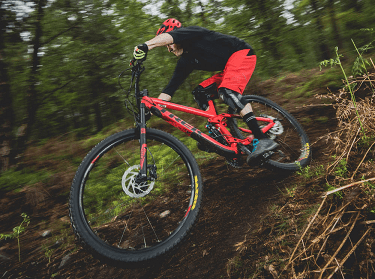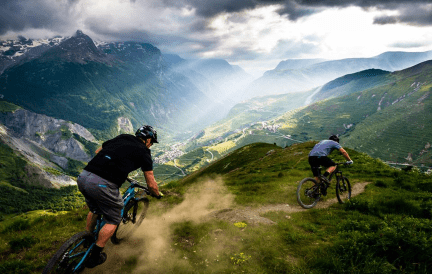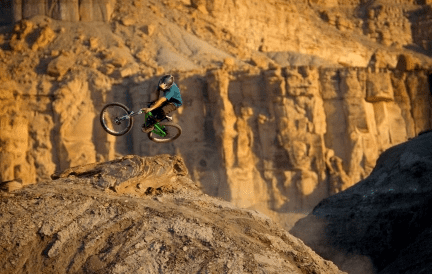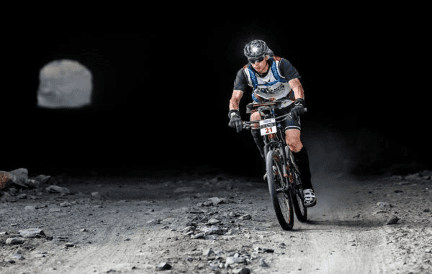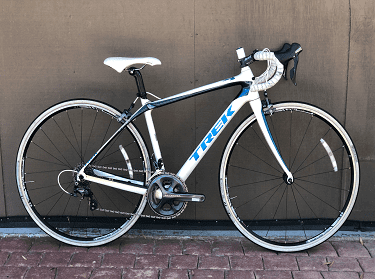Cycling can be anybody’s hobby but it is not a cheap activity. You need to prepare some money to purchase the bike you want. Nonetheless, the budget for the maintenance must also be provided. Here, we give you info about the 5 cheapest full suspension MTB.
- Part 1: Beginning: Product Overview
- Part 2: Release the Conclusion: the Best Mountain Bikes
- Part 3: Classification of Mountain Bikes
- Part 4: How to Conduct a Mountain Bike Test
- Part 5: Mountain Bike Buyer’s Guide
- Part 6: Conclusion
Part 1: Beginning: Product Overview
Biking in the mountains requires a certain type of bike that is suitable for mountain terrain. This means a bike that is tough and can do hard work in order to slay the rough tracks. For this purpose, you need a mountain bike. The mountain bike you need to buy depends on the purpose of your biking. Suspension is standard on most mountain bikes to keep you in control over rocky terrain, but not all mountain bikers require the same amount or type of suspension.
There are two types of mountain bikes according to the number of suspensions: full-suspension and hardtail. Full suspension mountain bikes have both front and rear shocks, whereas hardtail mountain bikes only have it in the front. Whether you should ride a hardtail or a full suspension MTB depends on how and where you plan to ride.

Full-suspension mountain bikes are made for a wide range of purposes and disciplines. It is recommended that you get a full-suspension mountain bike if you plan to ride on a variety of terrains and challenging tracks. On an off-road ride, full-suspension bikes absorb greater impact from gravels, roots, bumps, and leaps. As mentioned before, full-suspension bikes have suspension in the front and rear, which improves comfort and helps you ride more technical terrain.
They’re usually more expensive and heavier. You are going to need to spend at least $1,700 to buy a full-suspension bike. But, not all full-suspension bikes are expensive. There are some bikes that have reasonable prices, so you can afford it even though you don’t have much budget. There are some of the cheapest full-suspension mtbs in the market that you can consider when you are planning to buy one.
Part 2: Release the Conclusion: The Best Mountain Bikes
Riding a mountain bike on a track or mountain terrain can be very exciting and challenging. You need to pick the right bike that is suitable for you and for the trails that you are planning to ride. There are mountain bikes that are considered the best ones. When we hear the words “the best” we might think that the price must be very high. But don’t worry, there are some cheap MTBs which you can consider. Even though the price is less expensive than the others, they are considered the best in their class. So, here are the 5 cheapest full-suspension mountain bikes under $1,000 that you don’t want to miss.
1. Gravity FSX 1.0 Dual Full Suspension Mountain Bike ($499,95)
Pluses: user-friendly Shimano shifter, Double wall rim, adjustable suspension, disc brakes in the front and rear
Minuses: not for high-skilled riders
The Gravity FSX 1.0 full-suspension mountain bike has all of the features that make it the finest mountain bike under $1000. It comes with both rear and front disc brakes, allowing you to maintain complete control of your bike while tracking. This aluminum bike comes with 26” wheels. The huge double-rim wheels enable rapid movement up and down the mountain. FSX 1.0 Shimano shifter ensures massive gear ranges. You can adjust gears as needed for maximum speed and comfort while riding. But, this bike is not for advanced riders, so If you’re new to mountain biking and want a reliable full suspension mountain bike, this is the bike for you.
2. Co-op Cycles DRT 1.2 Bike ($999)
Pluses: it is unisex, good off-road capabilities
Minuses: it needs 2 drivetrains
The best use of this bike is for mountain biking and it is ideal for cyclists at the basic and intermediate levels. This trail bike comes with an aluminum frame and two options of wheels (27.5″ for size XS – M bikes; 29″ for size L-XL bikes). Shimano’s 2 x 9 drivetrain has 18 gears to let you tackle any terrain. To assist you glide over the rough spots, the front suspension has 120mm of travel.
3. Co-op Cycles DRT 1.1 Bike ($599)
Pluses: it is unisex, 21 powerful gears
Minuses: a bit heavy
This bike comes with an aluminum frame and 27.5″ wheels. With a 3 x 7 Shimano drivetrain and a Suntour front fork, this simple bike is well-suited for gravel paths and light trail work. The Co-op Cycles DRT 1.1 bike is designed for off-road adventures, with an adaptable 3 x 7 drivetrain and the reliable stopping power of hydraulic disc brakes, offering beginner riders the proper amount of control. The SR Suntour shock fork has 100mm of travel for a more comfortable ride and better control.
4. Cannondale Trail 5 ($950)
Pluses: it comes with 5 different frame sizes
Minuses: not for advanced riders
This bike is lightweight and long-lasting since it is made of Alloy frame SmartForm C3. It’s built for the hills and ready to take on anything. It comes with a 100mm travel and suspension fork of SR Suntour XCM. The Trail 5 comes with 27.5-inch wheels instead of 29-inch wheels in the small frame, offering it a feasible alternative for shorter riders. Trail 5 is a suitable choice for recreational riders or beginners.
5. Schwinn Traxion Mountain Bike ($541.95 – $849.89)
Pluses: it comes with a variety of colors, easy height adjustment
Minuses: smaller wheel size
This is a tough mountain bike for trails and local riding. The frame (comes in aluminum and steel frames) ensures consistent gearing and requires less maintenance. This lightweight mountain bike comes with 27.5″ wheels and 21 number of speeds. This bike is all-terrain capable. For increased stability, it comes with large knobby mountain tires mounted on light and sturdy alloy wheels. It’s a little more difficult to conquer large obstacles because of the smaller wheel size.
Part 3: Classification of Mountain Bikes
When mountain biking is a kind of activity that you like doing in your spare time, or it becomes your routine activity, you must know some things about it. Not only do you need to know about the parts and the maintenance of mountain bikes but also you need to know about the classification of MTBs. Mountain bikes aren’t all made equal. Each MTB discipline is unique, and as a result, each has its own set of requirements.
Why do you need to know this? It’s because it will help you to choose the right bike for you. For example, what bike is suitable for you if you want to ride on a mountain track, on the city streets or on a more extreme mountain trail. While the distinctions between the types aren’t always obvious, the suspension systems are the most important factor to consider. Here are the classifications:
a. Cross Country Bike (XC)
Cross-country bikes with full suspension have a higher geometry than other mountain bikes and therefore more suitable for pure speed and precision. They usually have a suspension travel of 80mm-120mm, and the suspension is designed to be as efficient as possible. This is important for improved rolling efficiency and greater traction. The bike is mostly used in cross-country races, which are typically held in forest/field areas or on gravel routes.
Also on pasture paths or through pathways with easier climbing routes and descending. XC bikes use steep head angles, narrow handlebars, and long stems, as well as the larger wheelbase measurement provided by the 29″ wheels, to place the rider low and stretched on the bike. This shape enables for higher speeds on the straights and more reactive handling on the more challenging sections of the routes.
b. All Mountain/Enduro
Riders who want all of the benefits of a trail bike but in a more durable, higher-travel, and slightly slacker package can choose Enduro bikes. Uphill, all-mountain/enduro mountain bikes are more useful than downhill-specific bikes, but they’re less adaptable than XC or Trail bikes. Enduro bikes are built to descend swiftly via steep and tricky terrain. Because the frames must be able to withstand a lot of damage, they are slightly heavier.
For faster, less challenging routes where speed is more vital, 29″ wheels are available, but 27.5″ wheels are preferable owing to the enhanced steering accuracy they provide. They have longer front suspension travel (about 150 mm) and are generally bulkier than XC or Trail bikes with larger tires.
c. Downhill
Suspension is key on downhill bikes, which typically have 180-220mm of travel on most models on the market. These bikes are designed primarily for downhill riding and are intended for gravity-defying, over-jumping thrill-seekers. As you zoom down the trail, the geometry is incredibly slack for more control and balance.
The tyres are thick and very knobby, and the 27.5″ wheels are superior in terms of handling. The equipment is simple in order to save weight. Downhill bike frameworks are intended to be sturdy and durable, ready to take the hard crashes and heavy landings that come with the sport.
d. Trail MTB
Trail bikes are the most often used mountain bikes. Often built from aluminum or carbon, and they come with either 27.5″ or 29″ wheels, according to the rider’s taste. The bikes are built to take on practically any challenge you can put at them. With flexible head angles, short stems, and broad handlebars, trail bikes feature a more classic and relaxed geometry.
The fork travel is normally equivalent all through the bike. Even though the front fork may have an extra 10mm or two to help with descending without compromising climbing capabilities. The bike is lighter, with a front fork travel range of 120-150 mm and a design that prioritizes comfort above pure performance.
e. Fat Bike
Fat bikes are also considered mountain bikes. They are designed to be used in all four seasons. For pedaling on snow and sand, or anywhere else where massive tyres are required for optimal gripping. The tyres are as wide as 5 inches. Wide tyres provide increased grip and stability, especially when combined with low tyre pressure. You will discover that you can cycle over terrain that would bury ordinary tyres.
Part 4: How to Conduct a Mountain Bike Test
It is not easy to figure out the right bike for you. Before buying a mountain bike, you need to do some tests to make sure if the bike is in a good condition and suitable for you. There are some ways you can conduct the test. You make it as if it were your own, so you can get the feeling. Do this to accommodate your riding style, make any necessary adaptations to the handlebar, pedals, tire pressure, and suspension.
If at all possible, ride the bike in terrain that you are familiar with. It would be ideal to ride them for a month before purchasing, but you usually only get a few hours including riding time prior to purchasing. If you have the opportunity, try it for a week or a few rides. Also, test at least two or three bikes before making a purchase.
Part 5: Mountain Bike Buyer’s Guide
Buying a mountain bike can be very tricky. When you have decided the need and the purpose of your biking, it is time now to hunt for the right bike. Before you make the purchase, you need to know the difference between a hardtail and a full-suspension bike. In a simple way, a hardtail bike has only one fork suspension located in the front while a full-suspension bike has suspensions both in the front and at rear. If you have intermediate or advanced level of cycling, and If you want to ride on a variety of terrains and challenging trails, full-suspension is the bike for you.
(1) Usage Scenarios
Someone who is into mountain biking can choose a full-suspension bike to roam the tracks. This kind of bike is really suitable for tough and daunting tasks compared to other bike types. Since it comes with two suspensions, it can do the maneuver well and quickly in the mountain terrains or even in the forest. A full-suspension bike adds more comfort and technology to your riding experience by reducing muscle strain caused by trail vibrations.
Not only that, but also while you’re going down the rougher, faster courses, you will notice a significant increase in cycling efficiency. This is why bikers prefer to use a full-suspension bike for cross-country, enduro or even do the downhill. The suspensions provide a softer ride for the cyclist while crossing rocky and uneven terrain.
(2) Wheel Size Selection
The options for the wheels are in a variety. The kind of biking activity you choose also plays an important role in choosing the wheel size. For years, 26″ has been the standard, and they’re currently less expensive and easier to fix or replace than larger ones. Today, you’ll still find a lot of bikers riding on 26-inch wheels. The weak rollover capabilities of a 26″ reduces its maneuverability marginally.
The emergence of the 27.5″/650B, 29″, and Plus sizes has effectively challenged the dominance of 26″. A 27.5″ wheel offers a variety of advantages and is a suitable compromise between a 26′′ and a 29er. They have the rapid acceleration of 26″ wheels that 29ers lack, but you’ll notice a noticeably smoother roll – similar to what you’d get on 29ers. Later on, one of the most recent improvements was the introduction of Plus sizes, which are wheels with the same internal diameter but are wider.
(3) Choice of Bicycle Structure
The seat, frame, wheels, and handlebars are the most important bicycle components. Aluminum, steel, carbon, or titanium can be the material of an MTB’s frame. You can choose what material you want according to your biking purpose and the budget. Aluminum alloy is the most commonly used for bike frames these days. Aluminum is lightweight, strong, and resistant to corrosion. Steel frames are strong, comfortable, and durable.
Due to its hefty weight when compared to aluminum or carbon fiber, steel is now only used on budget bikes and specialized custom frames. Carbon fiber bike frameworks have been around for quite a long time, and their design has been polished to perfection. Titanium is a strong metal with a distinctive look. It is pricey, but it has become a custom option for making bicycle frames. The structure of the wheel rim is usually a metal extrusion or carbon fiber composite structure.
(4) Men’s and Women’s Options
Mountain biking is not only for men but also for women. The bikes for men and women are a little bit different. Although, since everyone’s body shapes are different, there are no significant universal differences between men’s and women’s mountain bikes. Some women may require adaptations to their frame size (height and reach), type of the saddle, stem length, wheel size and handlebar measurements.
Women’s bikes now offer the same functionality and components as men’s bikes, which is a significant improvement over previous generations. Because women are shorter on average than men, women’s bike models feature lower stack heights. But now, instead of saying “this bike is for men” or “this one is for women” some bike brands will make a “gender-neutral” bike. That makes the bike models come in sizes, so it will be easier to choose one according to the size/gender of the biker.
(5) Is It Convenient to Buy
When you want to buy an MTB, choose the one that suits you the most. More importantly, the one that is convenient for you, such as the size, the seat, the handlebar, or other accessories. Before purchasing one, you can try it out first. Maybe, you can ask the seller whether you can do the test ride or not. This way, you can feel the bike and you can know how convenient it is for you. You can also ask the seller to make it more comfortable for you. Tell him/her the tracks that you are planning to ride, so you and the bike are ready to slide on the area without any difficulties. The ultimate question is: “Is the price affordable enough for you?” If yes, then go ahead.
Part 6: Conclusion
As previously stated, buying an MTB, especially the cheapest full suspension mountain bike is not an easy job. First of all, you must know what you need and the purpose of your biking. Then, you need to decide whether you want to buy a hardtail or a full-suspension MTB. You can decide based on the tracks that you want to go through.
A full-suspension is a good choice if you want to experience the rough and difficult trails, but if the roads are not too bumpy, then you can choose a hardtail. Also, you must consider the budget you want to spend to purchase one. The price can be depending on the frame material or other accessories. Some are expensive, but you can still buy a super cheap full-suspension mountain bike with a little effort.


